Wayne Gretzky famously said that you have to skate to where the puck is going to be, not to where it’s currently at. In the fast-paced realm of local marketing, no one embraces this philosophy better than our guest today, Mike Stewart.
A seasoned veteran in marketing and sales, Mike transitioned businesses into the digital landscape in the early 2000s, leading the charge in local search marketing to organically elevate client websites.
In this episode, Mike and I discuss how predictive analytics are not just a tool, but a canvas for creating masterpieces of targeted campaigns. We explore how machine learning algorithms don’t just assist but elevate ad targeting to an art form, painting in the vibrant colors of precision and personalization. This is the world Mike navigates daily, steering brands to not just keep up but lead in a digital race that reinvents itself at breakneck speed.
Join us as we dive deep into a conversation that is as much about the future of digital marketing as it is about holding on to the soul of marketing in an AI-driven world. So, without any further ado, on with the show!
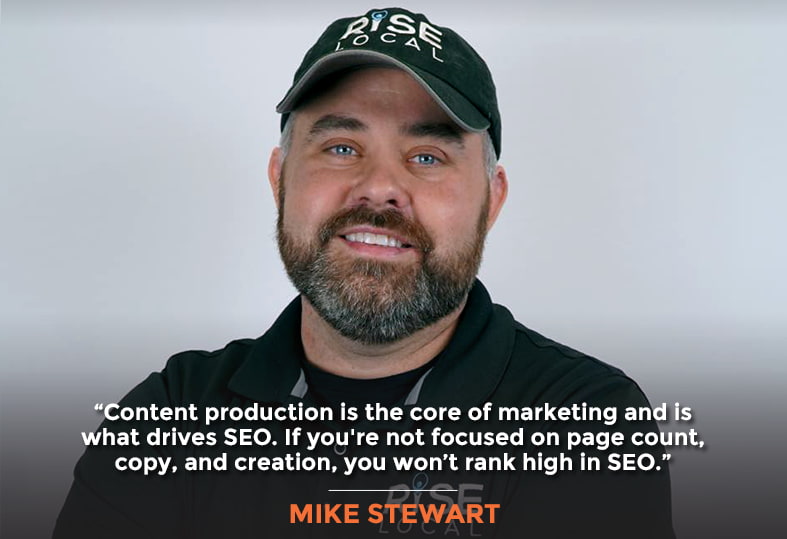
In This Episode
- [02:14] Mike Stewart shares his experience in digital marketing and highlights the evolution of AI and its impacts on jobs.
- [08:02] Mike and Stephan discuss using AI tools to generate content, with Mike expressing a preference for human-created content.
- [12:33] Mike and Stephan explain the impact of AI on marketing strategies and the role of strategists in injecting relationships and human touch into prompts.
- [18:57] Mike argues that negative emotions drive actions more than positive ones, citing examples from his business experience.
- [26:24] Stephan recommends a book that explores the concept of disruption and local businesses.
- [27:41] Mike describes the challenges of review manipulation and the importance of verifying the authenticity of reviews.
- [35:38] Mike emphasizes sending justification emails to customers after completing work, leading to high customer retention rates (95%).
- [39:37] Mike and Stephan stress the need for efficiency in website development and marketing operations and how treating it as a utility can disrupt traditional agency models.
- [45:49] Mike prioritizes communication and setting client expectations to avoid false starts and poorly executed campaigns.
Mike, it’s so great to have you on the show.
Same here, Stephan.
Before the recording started, we were talking about how we’ve come to know each other, our reputations, and so forth over the years. I’ve been wanting to have you on the show for literally years now, so I’m glad we’re finally making it happen. What would be something that you’d want to be known for as a difference maker and a differentiator, rather than just a local search guy coming on to a marketing podcast?
For years, I’ve had the pleasure of meeting you after your book, The Art of SEO. It was an industry conference. I enjoyed that. Being a part of the local and regional search marketing associations attending conferences like PubCon and others, I’ve had the fortunate opportunity to meet a lot of not only influential but also amazing experts in this field throughout my evolution from the Yellow Pages, of course, into what is the digital landscape of things today.
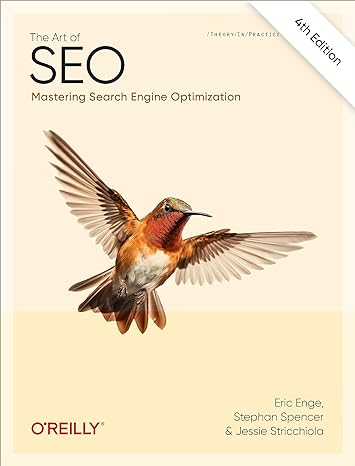
Guys like Duane Forrester, Brett Tabke, and just a culmination of amazing people have impacted me, not just in the aspects of local search, which I tend to get hyper-focused on, what I would consider being typecast as a local search guy, but just getting well-rounded as a digital marketer, and not to be that typecast one trick pony. I think one of the things, I guess, that I would be considered to be, I wouldn’t say, an expert, but considered to be knowledgeable on is the evolution of not just directional media but just marketing in general.
I’ve been doing this since I was 19. Next week, I turn 42. At the age of 19, there are not a lot of digital marketers that get a lot of respect. I had to earn it. I didn’t have gray hair. When I went and met a business owner, they looked at me cross-eyed. “What’s this kid doing here?” It takes a while to get to a point where you have the business acumen, the industry knowledge, the subject matter expertise, or just the ability to get things done and get people around you who are motivated to solve the customers’ issues.
I’ve gotten to a point now where I feel like old leather. Maybe you’re the same. That old leather feeling gives you a sense of confidence that you can weather the storm. The digital foresight of the death of the Yellow Pages, being the only guy at Verizon Yellow Pages that had a website, a blog and was into SEO, to recognize that I’ve got a staff of 20 people that their jobs are going to change. I’ve had to work hard in the last few months and in the last couple of years, of course, but in the last few months, to get them adapted to those changes.
And now we’re going through a big evolution in AI at this very moment, and so many people’s jobs will change. I was playing with Claude, and the Claude 2 Beta is phenomenal. You can upload a huge document, even a book. 100,000 tokens is how many it can take in the prompt, which is mind-blowing. It blows away that 8000 limit that ChatGPT has.
Imagine how people’s jobs will change or be made redundant in just a year. It’s incredible. You’re at the forefront of a tectonic shift here. I’m curious to hear what you see as some big milestones coming and how you’re preparing your clients, colleagues, staff, and everything to make this major change happen, to ride that wave rather than get crushed by it.
In the world of marketing, fear of judgment stifles creativity. Gain the courage to put yourself out there to bring innovation and fresh perspectives. Share on XWe start with the core of our business, producing content, which is the heart of SEO. If you’re not focused on page count, copy, or creation based on experience, you’re not doing SEO. The rest of it is a framework foundation platform on which to publish. That’s either up to standard or not. We have to move beyond that. We spent years fixing broken websites.
Now, I don’t think AI is going to build bad websites that are improperly constructed, have improper caching, or have proper hosting. I think a lot of those mechanisms of testing it are more than running a WooRank report like the old days going back 20 years. The future will be a big shift from being a driller to being a tool pusher.
Think of the fact that the automated technology, the MarTech 9000, will be MarTech 1 million because of prompts and the fact that we can make websites based on business type. We can have AI run better Facebook, Twitter, or Thread campaign ads based on competitive intelligence and inputs. You will have flat rates of content subscription tools that the younger generation will be more adaptive to using.
It starts slow, and it’s going to roll out fast. We thought it would be 2030 when they map the human brain. I think it will be 2024-2025 when the entire marketing industry goes to thin margins and practitioners know how to use the tools to get the outputs.
Inputs, prompts, and data sources create outputs. You don’t need to be an accountant to do your accounting. You don’t need to learn accounting. You don’t need to learn a lot of the things that traditional founders had to have to exist. In order to have margins and an agency, you had to disrupt things. You had to disrupt the agency model.
Now, business owners are like, “Why do I need to pay an agency when my kids are telling me how to use the tool?” I think that part of it will be huge, but I don’t think that means that marketers like me aren’t going to evolve because I’ve evolved when they started offering white knockouts in process color in the phonebook.
Inputs, prompts, and data sources create outputs.
I think the difference maker for those who will ride this wave rather than get crushed by it is that they can create novel applications of different AI technologies by weaving them together and bringing together disparate ideas and disciplines. Someone may be good at basketweaving or scuba diving. They can bring that experience and expertise and apply it to, let’s say, technical SEO or website development.
They’re finding novel ways to combine very disparate topics. That is something that will make you more marketable and keep you from being obsolete, like so many people with their job functions and what AI will be able to do in just two or three years.
When they came out with cable TV, nobody thought they would have TBS or channels specific to certain types of content. That changed the entire way people consume content. I think that content disruption will constantly happen.
I think brands, as we have seen, have been more open, especially smaller brands of being embarrassed. Maybe putting themselves out there, capturing videos in their office, making TikToks, doing that creative stuff that I’ve been asking for since I carried a bag of the phone books, driving around my Corvette. Definitely, there’s going to be a disruption.
I’ve talked to my content team. I told them, “Hey, if you call yourself a copywriter, you’re not going to be around.” If you’re not a true content strategist, content strategy principles, going back to real CS, it’s going to be hard because that’s the person that’s going to be using the tools that the AI is going to write.
It’s the tool pusher who’s doing the job. It’s not the drill. AI is drilling; we’re just pushing the tools into the data.
Kevin Adams, one of our paid search guys, we were talking the other day about the fact that you can put in two sentences and get an entire episode of content for whatever to produce. You can get 16 bars of lyrics, and it’s so simple. AI does that, but at the same time, we also have to recognize that it’s giving everybody the same information without inputs. It’s that tool pusher that’s really doing the job. It’s not the drill. AI is drilling, and we’re just pushing the tools in the data.
Yeah. A great use case for ChatGPT or any generative AI tool, whether it’s Claude, Bard, or whatever, is to feed it some examples of an email newsletter you send out every week and have it produce the next one. It’s just mind-blowing. I gave three examples of the previous Thursday Three newsletters. My newsletter is called My Thursday Three. It’s something that intrigues me, that inspires me, and that challenges me.
I just gave a topic to AI. This was ChatGPT that output the example, a newsletter. “I think I’m just going to use it like copy and paste.” It’s that good. Then, there is a little disclaimer at the end, like, “This was entirely written by ChatGPT without even editing.”
It’s really interesting to see articles come out from major publishers that, instead of saying they are made by the associated press, say they are made by AI. We normally see the syndication of the same content over and over. But now that you’re seeing AI create its own content off of fresh information coming off the wire, so to speak, it’s interesting.
I personally prefer new sources that I know are not made by artificial intelligence. I sometimes like opinions and different types. We all sometimes like to be in our bubbles and consume content. As I was saying earlier, you have to be willing to be embarrassed when it comes to being a business. Sometimes, that comes out to having something that you stand for, especially smaller businesses.
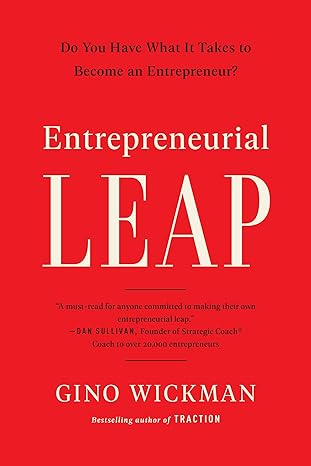
Bigger corporations have to go on a different path. But when you’re in smaller companies, you can leverage the fact that you’re personable. Leverage the fact that there’s a relationship with your customer that many bigger companies have a challenge of doing because sometimes the staff isn’t empowered to do that. In those environments, you can look at your competitors’ emails and say, “Hey, write me this, but give me a calendar based on these words for this month. Here’s something about me, and then here’s also really to get to understand who the customer is I’m trying to work with.”
For instance, I’m a solar company, and all I care about is anything other than making sure that they have more disposable income. I’m communicating that. Every time I write an email, I want to incorporate that into it. I want to incorporate specific messaging. AI is not going to figure that stuff out. That’s why you need those tool pushers, so to speak, who are our content strategists or subject matter expert marketers. The younger generation that knows the tools doesn’t always have the business acumen to get the results.
Yeah. When you were talking about it, it occurred to me this idea of—I might have spoken about this before in a past episode—but the idea that a label or a badge will exist that says, “This is 100% human-made.” I heard this idea from this Genius Network member, Keira Brinton, who I had on my other podcast, Get Yourself Optimized.
She thinks that there are going to be books that are going to be labeled as 100% human-made, not AI. Extrapolate that out to other forms, media, and so forth. I imagine having websites with that badge is almost like being certified organic. It just changed the game.
DALL-E currently does not allow it for text. I’m not an AI expert. I’m just a guy over here seeing this stuff come around, seeing my clients ask me about it, and using it themselves. I’ve used the tool DALL-E before, and it’s cool. If you say, “Hey, give me an image of a spaceship underwater fighting a killer whale.” It’s pretty cool. It can combine a lot of things. But you asked it to put text on it, and it’s currently not doing that.
Once that text gets on those kinds of graphics and digital assets, the world changes. That disrupts a lot of jobs. You have a background on jpg, and you remove the background in two seconds by uploading it. You don’t have to pull up your Illustrator, Photoshop, or any tools.
There are a lot of things that are disrupting how we get faster outcomes. But again, somebody’s having to click the button. Somebody’s having to take the information. Business owners are not going to do that themselves. They don’t have the time for it. That’s been the case ever since they designed their own ads in the phonebook, and it’s not going to change.
As a practitioner, you have a future regardless of AI generative tools that disrupt the time it takes to create things. I don’t feel like SEO is dead or any of those things are ever going to be true. We go back to the ‘70s, which was all about peak oil, but that didn’t happen. The ozone layer is going to deplete; that didn’t happen.
As a practitioner, you have a future regardless of AI generative tools that disrupt the time it takes to create things.
There’s always something that’s a tenure scare. Even with us, this is the newest digital revolution that we’ve had. Obviously, Google’s done all its tricks to do reverse engineering from Google 411, to disavow. That’s how Google operates. I think we’re in for exciting times. I also think that we have to recognize that different AI may produce different results, but AI produces common results. And the only way is to evolve it.
I think there was one in particular that was a conservative AI. They gave you a conservative view, maybe of Tusk or something. I think that they lost their license to use the tool. That’s going to happen. Whoever sets those rules, those are all private businesses and things like that—the marketplace of how we create an AI-specific for our type of industry, business, and customer. That’s where it’s going to get interesting. That’s where the MarTech 9000 goes to MarTech 1 million overnight.
Right. I’m sure you’re right about how the strategist will still have a job or role as a consultant because the business owner won’t be on top of the stuff like you could be.
AI doesn’t know people. It doesn’t know what you want to be today versus what you want to be tomorrow. You have to talk to people to get that. Marketers are the people who talk to brands to extrapolate what they’re about, who their ideal customers are, and all those things. AI doesn’t always know your business rules, profit centers, goals, resources, and all those other things that matter.
From my standpoint, I believe very much in the metaphysical esoteric. If you look at the output from an AI, it lacks soul and it’s soulless. Relationships are everything, and you’re incredible at relationships. How is the AI going to inject that? It requires you, as the strategist, the architect, to inject that into your prompt to get output that has soul in it because that’s based on you, not the tool.
Yeah. I think one of the biggest shifts is the data. I say forever since Facebook, and I was not able to get Facebook because I had a high school diploma instead of a college degree. I was not allowed to get into Facebook because I didn’t have a dot-ed, whatever domain, or email.
Marketers are the people who talk to brands to extrapolate what they’re about and who their ideal customers are.
That was the very early days, the beginnings of Facebook.
I was there. I walked around the Verizon Yellow Page office asking folks, “Hey, I can’t get on there.” I’m the only guy without a college degree at 19 years old. With that experience, things have evolved.
You have all these different social platforms now. The idea is that you can essentially dock your port to port at any one of them with your data and say, “Hey, you know what, I’m going to take my information from this source and say, ‘I’m going to move it over to this one,’ it’s like what we did with local.” Locals evolve to API feed injection data centers that essentially operate in a sense where they’re data aggregators. Should we say data centers go back to the telco?
Data aggregators, like the service orders you get when you get a phone line in business, and that’s how it feeds into the old presence stuff. The data aggregators out there, now for a brand to be able to do that, where they can shift from one marketing company to another without having to onboard, fresh and new, give them all that backstory.
“Let me tell you about my competitors. Let me tell you about my industry space. Let me tell you about all these things that impact my business and how I’ve come to where I am today, the backstory, how we got here, and that whole process you go through every time you change providers.” In some industries, they change it like underwear. They feel like, “Every time I change a provider, I may get a level up.” This guy is going to add a little bit here, and this person is going to add a little bit there.
My digital presence will improve as I go from one tactical provider to another across these channels, whatever they do. I have some companies do the full sack, everything from the hosting to the TV commercials. That’s a pretty wide range. That idea that you have to start that conversation over again versus having a cue box of that information like search console is here, rank data is here, publishing data is here, user engagement is here, my remarketing retargeting email stuff is here, you can just flip it around and see it all. You, as a business, own that as opposed to having an agency create a data studio report or something else.
That concept is one of the other disruptions: our data, decentralized networks, automation, you own it is much more advantageous to us to get the cost of marketing down and to make it where you have to be more competitive or creative to win people’s attention.

I agree. The Wayne Gretzky quote, “You got to skate to where the puck is going to be and not where the puck is at.” This is changing all of it so fast. It’s really going to require that strategist to be a futurist in order to be successful. To try and do this on your own, I think, is going to be very hard for somebody as a business owner who’s running a plumbing business or AC unit HVAC repair kind of business. They can’t keep up with all this.
No, they’ll typically be good at one thing. Most are not publishing product and service pages, but they’ll be good at one thing. That’s one channel that they’re great at unless they get folks around them that are better at those other channels, somebody who does know how to use tools and can consistently create email campaigns, somebody who can consistently ensure that local search compliance is up to snuff, knows how to do the scans, knows how to check for that data, somebody that specifically knows how to create on a schedule, a feel media producer, to capture media recurring. Those are all at the channel level, what you would subscribe to, that you put a part of your marketing mix.
Having a very robust marketing mix is going to be more important. We used to survive off the three-pack. Back in the day, it was a ten-pack or a seven-pack. Now, that local pack is down to three. That inventory is becoming more and more condensed and then going more towards opportunities that allow those companies, like the social media companies, to get paid.
Having a very robust marketing mix is going to be more important.
To get paid, Google guaranteed Google paid search. It’s not Google organic, and it’s not content-specific. A lot of the inventory on Google search results is all paid mechanisms. I think a big consideration is how that stuff monetizes. If Google’s taken that information from your website and put it in front of people, and it’s not sending that traffic to your website, that’s also disingenuous. I think people like me are going to be at the point where we’re like, “I have my own Facebook.” Don’t go to Facebook, go to me.
The dot-me was, of course, one of the first concepts. Mastodon, all those different decentralized networks, we can take your information and move. Like I said, “You pull your ship up the port, you’re able to take your ball and go home.” That, to me, is a part of the opportunity there.
Some of my friends have also proven that if you’re out there as a marketer, and you’re putting out content, and those for-profit companies don’t like the information you’re sharing, they don’t agree with it, your content may only be seen by 30% of the people that if you create a profile, and you didn’t do the same egregious behavior that they believe you’ve done, your friends will see totally different content if they subscribed to both of your profiles to be created to a level. And we’ve proven that.
When you’re in that kind of system that you feel like it’s not always fair, to me, that’s one of the best ways of creating fragmentation, systems that have become complicit for other purposes. The Yellow Pages did the same. They went from monopoly and duopoly to fragmentation, back to duopoly, back to monopoly. By the time they had a monopoly, they went from $8 billion to half a billion dollars. That’s a lot of money that shifted during that time. Along the way, there are certain people that make money.
Just like in social media, if you say the right thing on social media, you can change the stock. Look at Elon Musk. He has a lot of impact these days. It’s pretty interesting to see that. It is much harder to do that in private companies than in publicly traded ones.
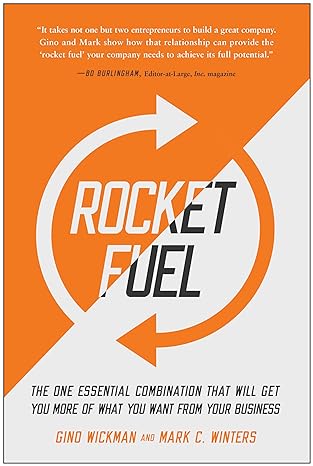
Yeah, interesting times.
Yeah. The internet happens to be an awesome mechanism for purchasing. It still doesn’t beat repeat and referral, but something had to hook it first. But the internet is, as I said, the bathroom wall of America. It gives you a lot of ability to create engagement based on emotion, and the most attractive emotion happens to be negativity.
Why did people subscribe to Howard Stern? Because they wanted to hear the stuff he said. They didn’t support Howard Stern, and they didn’t like him. They may have thought he was funny, but they probably thought a lot of the things that he said were vile and disturbing. But the fact is, because they didn’t like him, they subscribed to him. He had so many subscribers that there were people who just did not agree. They would vocalize that they didn’t agree with his position. But at the same time, they subscribed to him because it’s emotional.
Negative emotions create a lot of action sometimes. I’ll give you a great example we use locally. We tell them that 3% of the time when people are happy, they’ll leave a good review. If you ask them to leave for an employee, they’re more likely to do it. We might go up to 6%. But 30% of the time, if they have a bad experience, they’ll leave a negative review, way more motivated in negative. That’s just the nature of it.
If you have a bad reputation, it’s not just because people are motivated negatively; it’s just that you’re probably not having enough good experiences and encouraging and talking to your customers to share. But on the negative side, you don’t have to ask them to share. They’re motivated—logic or emotion, logic plus emotion. No, emotion by itself wins every time.
And people back up their emotional decisions with logic. It’s not the other way around.
Bingo, yeah. That can be for marketers. We’re out there talking to clients, telling them, “Hey, somebody’s got to do basic core social media.” I don’t care if we’re owning 90% of it, or you’re owning 90% of it, and none of us need to own 100%. There’s got to be a symbiosis. We have to have accountability for where the outcomes happen. Sometimes, it’s, “Hey, Mr. Customer, Facebook is a historical record of your proof of work.”
Negative emotions create a lot of action.
For us, when we talk to clients about the big thing, POW, proof of work, we get into those discussions, it’s trying to motivate them to realize that the iPhone 13 or above takes better pictures that are meant for the web, they’re formatted for the web, than your most sophisticated camera. For me, myself, I have a Blackmagic 6K Pro, Netflix-approved.
Last week, I spent six hours just trying to get the content off the camera to manipulate it because it’s meant for something that’s not what I’m trying to use it for. I bought it because I thought it was great. It’s like the maintenance of a Bugatti. You know how much it costs. That’s not a bad comparison because that camera went from $ 5,000 today. I’ll probably get $800-$900 for it.
That’s the kind of stuff that we deal with. I realize that the technology, just like the iPhone, to be able to capture that media for a business and edit it on your phone, my social media folks can do a lot of the same editing, not just Canva, Photoshop, Illustrator, and other tools, but they can do a lot of editing just from their phone apps. It’s pretty cool.
That, to me, is really awesome because it stops people from being apprehensive about engaging with their local market. It stops them from thinking about trying to create offers and promotions, and those things are beyond them. I can probably have Genie. They create a UI plan. I can have AI create a social plan, and I can have AI create all of these things to the point where marketers now have no excuse for having that holistic channel engagement. That’s also part of our business now.
Now, if you’re out there trying to sell your social media consultancy agency for $3500 a month, get real for some brands that might make sense. It’s a corporate brand with a multiregional footprint, a whole different conversation than Jim’s Plumbing. But there’s no reason for Jim’s Plumbing not to share his effort, work, results, message, and everything that makes you want to work with him as a brand owner. When you’re a professional service provider, you have a big impact because people will see differences between products and service providers.
Honestly, I’ll tell you, I think a lot of the traditional businesses, like a lot of digital marketers, tend to focus not on fixed-location or multi-location businesses, but they focus on your professional service providers and home service folks. They’re the ones that the franchises haven’t kicked out of business. COVID didn’t put them out of business.
Where are we going to put our effort? Lower margins, certain ideal customers, tools to satisfy them, and more channels at a lower cost. If you’re selling $250-$1000 on social media, you’ll be better off than only selling a $3500 consultancy. It’s just the way it’s going to be.
I think a lot of practitioners in our industry, a lot of the old guys like myself, I consider myself that now, we’re just going to have to accept that we’ve got to adapt. A lot of them are adapting, but it’s just, “Who moved my cheese?” Him and all. That’s what happens.
Focus on simple connections to build your business and marketing relationships. Then, evolve by creating media assets and use AI to generate your social media campaigns. Share on XI love the book Who Moved My Cheese? Speaking of books, I want to make a book recommendation. I don’t know if you’ve read it. I want to hear that, but this is also for the listener. It’s a novel called Snow Crash by Neal Stephenson. It’s very futuristic, but it’s coming very soon.
This idea of disruption of all the local businesses, the takeover by certain franchises. It’s almost like a mafia-like power play by certain franchises. It’s fascinating. I think you’d really enjoy it, listener. If you haven’t read the book or listened to the audiobook, Mike, I would highly recommend it.
Definitely, I wrote that one down. I will check that out.
What do you think the solution is for our listeners if they have negative reviews, whether it’s Yelp, Google, Facebook, or wherever? You mentioned that 30% of people or customers with a bad experience would be motivated to write a negative review, but only 3% if they had a positive experience. How do you advise clients to fix this situation if they have an overabundance of negative reviews?
Yesterday, I was out seeing a client in the solar business. If you want to look at questionable reviews, get into the solar industry. It’s like garage doors back in the 80s and 90s of directional media, Yellow Pages. There are a lot of questionable providers in that industry as well.

Third-party reviews are one thing I’ve seen specifically. When you look at the search results, you’re starting to see a lot of websites with review schema. Leveraging that aspect of it on third parties and your website is one tactic that I strongly recommend you consider. “How do I leverage review schema so that I can influence that reputation on search result pages?”
As far as your own issues with your own various platforms, let’s say Yelp or Google, there are companies that provide services to look at reviews based on technicalities. What’s in the review content? Who has posted? There’s even a Chrome plugin. I can’t recall if it’s still working or not, but it was a Chrome plugin specific to looking at the review content tattletale on those companies that have reviews that are questionable based on this person’s published review on another page or another page.
They see that link, that network of those reviewers. But I think the systems are getting more sophisticated now to where fake reviews are going to be more prevalent. I think, as a brand owner, you have to find it through encouraging, obviously, ambassadors, customers, and employees. When I say employees, I mean employees, friends, and family that may have used the service. Those kinds of things require specific efforts to be able to get around.
I also think the future is going to be more blockchain-based review content, which is proof of work and proof of stake. If that’s not coming around, we’re going to have problems because we already have verified personas, social profiles that could be linked to reviews with avatars, and ways of making reviews look less questionable, and they are questionable.
It’s really easy to tell oftentimes when reviews are being manipulated by certain industries because the volume of reviews one company has versus others and the ratings are very different. It’s not an industry norm. If you’re doing something to manipulate it, just like Yelp says, “Oh, read our reviews over here.” They never say leave a review. That’s against their terms and conditions.
Those kinds of roles within their platform, and then they, of course, suppress your reviews. And you say, “Well, why are they suppressing it?” Yelp suppresses reviews because of how long the reviews have been there by the reviewer. They’re looking at all these things to determine that. We’re all dealing with the same challenges because negative reputations from competitors and smaller businesses are very common.
When you look at the search results, you’re starting to see a lot of websites with review schema. Leveraging that aspect of it on third parties and your website is one tactic that I strongly recommend you consider.
Is Chili going to leave a negative review for Applebee? I don’t think so. There’s too much risk there. But in smaller businesses, a lot of those incestuous, weird, egregious tactics are very common. When I started my company- I left corporate back in 2010—my first company was a link-building company. That’s primarily what we did, and we built links up until 2014.
Of course, why did I stop in 2014? Go figure. Everybody had stopped at that point. Farmer and Penguin, we went through it all. EMD wiped us out in 2013. We’ve gone through all those updates. Now, you have helpful core content, spam updates, and plenty of updates happening as well.
When it comes down to it, I think the future is definitely going to be more proof of work, proof of stake, verified personas. “Did something happen? Did they actually pay for that service?” Google asks you when you leave a review if you used this product or service. “How do they verify that?” They’re not, but there will be mechanisms for verifying that. I think those reviews are going to essentially stand apart from the others.
This is similar to Amazon, where a verified purchaser of the book left a review.
Yeah, that just needs to happen in the service industries in the same way. I think things will be more positive for cleaning up. One of the first moves Google made was a real author, and then it was the Google reviewer. All the third-party reviews were removed. You only had to have a Google profile. Of course, all the old reviews that didn’t have a profile set a Google user forever. Of course, at one point, they got all scrubbed. Businesses lost all those reviews.
Those are the kinds of changes that happen. What Google gives, they take it away, disavow, you go down the list. It’s just the nature of it. A lot of reasons why they roll things out, in my opinion, is just for reverse engineering. They’re the best at it.
Yeah. You mentioned proof of work and proof of stake. That makes me think that you’re into crypto. Are you?
No. I’ve had folks who are into it work with me. Some of our industry friends are into automation, crypto technology, and crypto companies and do marketing for them. They’re still rolling that. Guys like Steve Floyd and others are still in those spaces I know in DFW.
No, I’ve never really been into crypto. To me, it would be like if I’m going to be back into investing in stocks like when I was in the Yellow Pages. It requires a lot of focus and attention away from your stakeholders and into the numbers, as opposed to the people.
Speaking of people and the Yellow Pages, do you keep in touch with Chris Silver Smith?
In the world of AI, diversity breeds innovation. While different AIs may yield distinct results, the key is not just to embrace AI but to evolve with it. Share on XOf course, yeah. Chris and I both were on the board of the Dell Search Marketing Association for quite a few years. I am currently back on the board with DFWSEM here in North Texas. I’m one of the treasurers. Kevin is currently our president. We have Casey Markee. We’ve got Kris O’Connor and some other folks still with our board. We’re, I guess, DFWSEM 3.0, if you will. We’re keeping that alive.
We had a conference on November 13th and 14th. State of Search is still on, and it’s stateofsearch.org. It was a two-day conference in Grapevine, near DFW Airport. Not a lot of conferences. We talked about early on that that’s where you get a lot of your bearings in the industry. You get your place, understand your role, and understand where you can help. It sets you into your career.
Without those kinds of things going on in person, I think we’re all at a disservice. After COVID, a lot of conferences and stuff have changed. But in the way that conferences are run, I think there’s a different way of approaching some of those things. Connecting with folks who are feeling your pain is imperative to your future success.
When you start your business, your business partnership, your process, whether or not you decide to get into certain channels, add those to complement your business, and take those risks, it’s a lot easier to do that when you can go to guys like Tony Wright and Sean Jackson. People have been there: Brian Clark, Copyblogger, etc. Many folks have already been trudging along to build that path in our industry.
Connecting with folks who are feeling your pain is imperative to your future success.
I don’t think there’s a lot that is trying to do what I’m doing, which is a little different. Everybody’s going outsourced in remote, in teleconferences, or whatever. I am all about sitting in front of folks, talking to them over tea, and working with them. We have multiple offices for our business, where our customers come in.
We have drop-ins coming in in our office in East Texas. Here in Dallas, the studio has folks come in to capture media. It’s a lot harder to do that remotely. Even with that $100 studio setup with a coat rack and the floodlights, business owners aren’t going to take the time to make those kinds of things and do those kinds of things. It’s a lot easier just to roll a crew out with some lighting and some cameras and capture it at those moments.
To me, those services are still going to be quite common if you’re good at providing those kinds of local services to folks. Understand your service catalog, and it is not always a product company. “Is it an SEO product or service? Window replacement or replacement window?” Those are things we’re going to have to start thinking about in order to survive.
What are some other processes that you figured out over the years? You’ve been in business with this agency for 13 years or something?
Yeah, 13 years at it. It’s a lot easier to take credit for your work than defend it. If you’re on your heels, if you’re having to tap dance, because you haven’t explained to the customer, they’re not aware of the issues. I think that’s one of the biggest challenges for many of my competitors. It’s a lot easier for me to take their business because I’m open and honest and have no reason to give them anything incorrect.
I had one customer—no kidding—who received the same report every month, and all they did was change the date and the title at the top. This guy spent $20,000. That’s crazy. It happens all the time. So many are looking out for their own compensation rather than building a business with value.
That’s the opposite of the principle of preeminence from Jay Abraham, where if your client is better served by being sent to your competitor, you should do that. This sounds the exact opposite of what’s happening in the wild.

Yeah, and they’ll use a lot of means of retaining the customer, going from domain control to URLs that they purchased that the client paid for, but yet, they can’t ever get them back, placing things off the brand domains, building other plantations. For that customer, those aren’t good. There are a lot of tactics, including removing access from their social profiles that are created. Anything not on the client side in the future will be dead.
If you’re thinking a non-client side business is going to survive in the future of digital marketing services, you’re off. At that same point, I think the willingness of a business owner to allow access to their Google Business Profile, their GBP, and Facebook, and allow privileges for WordPress or another CMS-based website. All those things, you’re going to get more commonplace, controlling permissions with authentication and all that.
That’s helpful because sometimes, the hardest battle is getting access to the resources. When I have to talk to a client, they’ve got a domain registered. They didn’t register the domain; some third-party agencies did, and they don’t have to get to it. That right there is one of the biggest concerning things. That tells me that they’re not up to the minimum standard. The minimum standard is your ownership of your property.
Those are the kinds of things I think that are going to change, but we all are motivated to provide value when it comes. I’m motivated every day. I tell my staff, “When you publish a page for a customer, send them an email and then give them justification.” If it’s not something that’s pre-planned, it’s scheduled. If it’s more of a subscription-like it post content or page level development, building that IA, the information architecture of the website, when I talked to my staff, I’m like, “Hey, send them an email, tell them what you did, we don’t lose customers. Our retention rate is 95%.”
Sometimes, the hardest battle is getting access to the resources. The minimum standard is your ownership of your property.
I have one client who’s been with me since 2010 and does AC service. They’ve been around since 1975. But since 2010, they’ve worked with me. I think that’s pretty cool. Those are the kinds of relationships.
One is a Spanish immersion school. They’ve been with me for ten years. That’s the ideal agency life. As my sales team, we would prefer customers see us not as a necessary evil but embrace us as an advocate for their business as those companies. That’s really what you want.
As a profit center. Not a cost center but a profit center.
Yeah, exactly. We also want to help them evolve. We started our business with the essential needs, which are usually website, local, hosting, and all those things. We progressed the channels, which is adding social, content, and field media. That’s usually just base-level core solutions, and then we progress into more advanced things that get into doing TV commercials for the local ISD.
It takes a lot of staff to do that, which requires a lot of payroll. If you’re not okay with $20,000-$40,000 biweekly payroll, payroll creep, or whatever you want to call it, this is meant for the audacious, the courageous, and those willing to put their neck out there, not those who are timid. Entrepreneurialism is not for everybody. If you’re not willing to not count hours, if you’re not willing to miss vacations, if you’re not willing to be unhappy, you’ll probably want to go get a job somewhere, maybe the government first.
Yup. Gino Wickman wrote the book Entrepreneurial Leap, which is all about how most people are not wired to be an entrepreneur, only a single-digit percentage, I think it is. He was a guest. He is also the author of Traction and Rocket Fuel and the creator of Entrepreneurial Operating System (EOS).
Yup, the EOS. I think of myself more as a visionary as opposed to an integrator. I operate at the visionary level. But I’m not a bad integrator, and it’s more what I’m built for. Traction is the EOS process, getting into documenting those goals. Essentially, it’s like a vision board for your company. Definitely helpful. I think that’s all Goldman Sachs stuff.
I don’t know about Goldman Sachs.
I think it was the folks that were involved in Goldman Sachs of some sort that put that out there as a way of fixing businesses. I may be wrong. I’m going back to the whole concept like SPIN selling. Where does it come from? It comes from some institutional thinking, of course.
Yeah. EOS is great. Do you implement that completely, or are you just familiar with it?
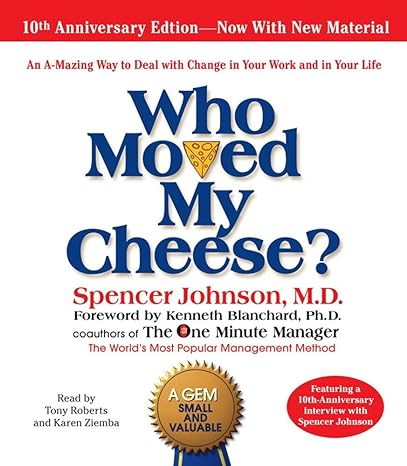
It requires quite a bit of work, especially if you have a partnership. It requires quite a bit of work to get down to. It’s a lot easier if it’s just you and you’re just documenting your stuff. But when you’re having to come up with a process and a vision that both of you agreed to, that is definitely a challenge for many folks. For me, we pivoted. I went from four or five employees to 20-something almost overnight.
That was not a part of a traction plan, I can tell you that. It just happened after COVID. We had a lot of clients asking for website changes and things like that. We realized that being efficient and being able to knock out changes really quickly is a great way of earning favor, so we had to support that in our business. Traditionally, if you wanted to make changes to your website, it wasn’t real-time.
Yeah, and you charge on a retainer basis, I’m guessing.
Actually, in our business, we do provide hosting, of course. We localize servers and provide all the caching and all the other mechanisms to make the site efficient. We traditionally get them into local presence management concerns, and the issue is solved. Of course, we get websites. I typically would like to turn a website for a guy who doesn’t have one around it within a couple of weeks. You can imagine an AI would be a couple of days or less just waiting on inputs, waiting on some photos to replace socks.
That’s the way it should be. Any website that takes longer than that is usually going to be more design intensive, feedback going back and forth, and usually needs a requirements doc, RFPs, and all that. For us, we treat websites, capture media, and all that as a utility, in that essence. By being more of the marketing operations versus the agency mindset, I think it allows us to disrupt a lot of ways agencies are trying to capture extrapolated margin that if you’re willing to accept the lower margin, scale your customers, and you’re willing to lose them, I think that’s also a big point.
Some people take it to heart when customers decide to change. My attitude is I just want customers to celebrate working with me. The ones that celebrate working with me, like working with me, can get along with me, listen to me, and appreciate me the more I go hard in the paint to make sure that they are taking names in their competitive landscapes.

That’s awesome.
It’s hard for a spouse to compete with the customers of a digital marketer not for ego but for validation. You’re constantly being told in many of your relationships, “Man, you’ve saved me, man, you’ve helped me.” I’ve heard that since I was 20 years old when I started to come up with headlines in the phonebook. People have bad ads, and I fixed them. Nothing’s changed.
It’s hard to get away from that, too. I could do something else for a living so that I could get the same accolades, the same appreciation, the same respect, the same friendship. It’s an amazing industry to help brands capture more customer leads and grow their business. Now, you just have to find the ones you want to work with, the ones you can get along with and have respectful boundaries and communications. I look forward to that part.
For me, the future is to watch the payroll numbers, the staff number, the revenue per head, and those kinds of things they tell you about. “Is it 100,000? Is it whatever?” Those are the things you start paying attention to when hiring a lot of people.
For the most part, it’s making sure that you can get to a point where, for me, I measure my value based on how many calls I have on Wednesday. Wednesday is the day when we usually fill any issues with clients. I try to fill a funnel all down into Wednesday, usually from 10 AM to 2 PM. That way, I could spend the rest of the week on more positive things as opposed to issues, whatever they may be.
Being efficient and being able to knock out changes really quickly is a great way of earning favor, so we had to support that in our business.
Issues can be channel-specific things like what we call stucks, where clients are stuck for some reason. I try to funnel those, especially customers, where clients are having conversations around results and expectations. I try to funnel all those into Wednesday.
I measure my capacity based on how busy I am on Wednesday. When I say capacity, I mean my capacity to focus on other things. If you, as a brand owner in this space, are being weighed down by more customer-specific issues as opposed to the business, that can also become a challenge for sure.
You mentioned so many cool things. I wish we could double click on these for a while, like a vision board, SPIN selling, requirements doc, just processes, everything, and your wealth of knowledge and experience. I know we got to wrap up here in just a couple of minutes, but did you have anything you wanted to share as a piece of wisdom, some learning lesson, or a mistake you made?
I was 19, doing listings in the phonebook. “Hey, do you need an alternate heading or alternate listing? Hey, you want to bold that up. You want to put a super bold name in red, right?” And that was 19 years old.
I have a 21, almost 22-year-old son who handles our local listings. The other day, he came to me and started with ‘Dad.’ That’s funny when your kid works for you, too. He told me the reason why this one client’s listing wasn’t live. And he said, “You have to wait two months.” I was like, “Okay, that’s right, you got to wait two months because Google, no matter what you do on that listing that says suspended or not eligible. That’s it.”
When it says not eligible, the Google AI locks up for two months. If you try to recreate that listing, it gets knocked down for two months. Two months later, you changed it to a SAV service area, and it went up. The business owner is never going to be told by Google that that’s the reason. They’re out here in the dark, thinking the agency is screwing up.
“You’re not doing your job. Why isn’t my listing live?” Well, it’s because it was set up originally the wrong way, and it’s locked for two months. My point is it’s pretty cool that my 21-year-old kid figured that out before I did. I’m the proclaimed expert.
Some people take it to heart when customers decide to change. My attitude is I just want customers to celebrate working with me.
He comes to me for local guide edits and everything else because I have all that local guide authority, so to speak, with user edits. It’s just really cool that the younger generation figures out the rules, and they figure out the systems. It’s pretty cool that we all can adapt, and it’s also pretty cool that the apple doesn’t always fall far from the tree.
That also underlines the concept I love, and there’s an entire book about it called Who Not How. You don’t have to figure out all the how by yourself. You just need to get the right who. “Who has the how with them?” They come with the how. That book is phenomenal. It’s written by Dan Sullivan and Dr. Benjamin Hardy. That’s a great lesson right there.
Also, was there some mistake that you want to share that really was a powerful learning lesson for you in those 13 years of running this agency?
I think the biggest thing was around 2018-2019. I created business boundaries. When we’re trying to earn a living, ever since ‘19, I guess I could say I’ve been more or less what I consider a straight commission income. You’re motivated for sales, you’re motivated to acquire opportunities, and you look for those opportunities, and you get excited about them. We all get excited about the opportunity. We get excited about our brand.
One of the big things is that you must be willing to change, pivot, and make a shift. You have to be sometimes audacious and courageous enough to accept that failure is okay and things don’t always work out. My link-building company may not have worked out, but it afforded me the ability to do what I do today. I pivoted from that, and I learned from that.
Was it my fault that Google was such a bad spam engine early on in the days of SEO that it took it a while to finally figure out what users really needed to read, see, and learn? That’s a part of it. We all have to evolve, and we have to be willing to evolve.
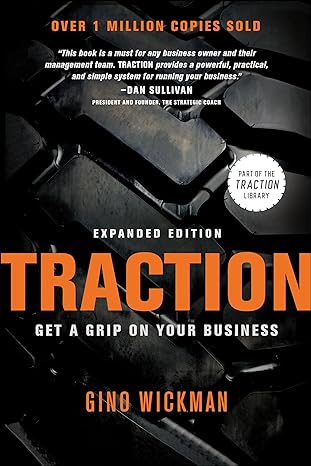
I still use rank data. I still track rank data for clients. A lot of people talk about that. The search console gives you plenty of data on rankings, etc. But at the same time, I still like running my own third-party rank data versus just relying on what search console Google and other analytics data tell you.
I try to stay connected with my customers, communicate with them, and set expectations, usually a two-week deliverable. You create those kinds of boundaries because you don’t want false starts, bad onboarding, or campaigns that are sometimes overplanned but poorly executed. I’d rather start with something simple and then evolve, build media assets, allow the AI to generate content campaigns for social posts, and so on.
Facebook and Google have their AI, so you understand they do that. You give them the tools, the means, the inputs, and you get better results. The hard part is training the younger generation on older tactics, but I also think that the younger generation comes up with a lot of great creative ideas, specifically because they get into the creativity of the content.
A lot of things that you see today, nobody would have ever considered publishing in the past. They would never have said that brands wouldn’t have done that. Those are the things that are adapted to the younger generation. They’re more at risk of being embarrassed like I said earlier. You have to be willing to be embarrassed as a brand.
It’s a lot easier to do that with younger gen than it is sometimes with older folks. The older folks are always worried about what people think, whereas the younger folks are willing to put themselves out there. That’s how they get hired with me. I look at the resumes when I get all the stuff that comes across and which ones stand out. The ones that took the effort to talk to you are usually the ones that get hired. Those are the folks that are on my team.
Yeah, awesome. This was all really inspiring and informative. Thank you so much for sharing all these great experiences, learning lessons, and your insights and ways of thinking about things. If our listener or viewer wants to work with your agency, Rise Local, if they want to, I just learn from you. Where do we send them?
We can redefine marketing by transforming our websites and media into utilities. We need to embrace lower margins for scalable success and remain willing to evolve. Share on XTell them to call me at 214-998-2406. They can go to our website, but just call me, and we’ll talk. I spend a lot of time interacting and connecting with clients. We have a great tool. I also share this: it’s called Roam from the folks at Yext. When I say folks at Yext, I mean Howard Lerman and his team built it.
It’s a fantastic distributed workforce tool. We actually have offices for all of our staff there, and I’m able to walk into somebody’s office. I can look at their bookshelf. I have a 2500 auditorium. It’s an awesome tool for collaboration outside of the traditional Google Hangouts, chat, and all those other mechanisms that Google has.
It’s called ro.am and is super inexpensive. It’s an awesome platform. If you have an agency and you have folks all over, and you want to still be able to have your own corporate office in a digital place, you all check that out. I want to mention that because that’s a great tool that we’ve been utilizing. That’s allowed our team to collaborate, meet, share their screens, and feel like they’re working next to each other, even if they’re not.
That’s cool. We’ll catch up with you in the next episode. I’m your host, Stephan Spencer, signing off.
Important Links
Connect with Mike Stewart
Apps and Tools
Books
Businesses/Organizations
People
Previous Marketing Speak Episodes
Previous Get Yourself Optimized Episodes
YouTube Videos
Your Checklist of Actions to Take










About Mike Stewart
 Mike originally founded Rise Local in 2015. This business venture came to be after a years-long career helping businesses promote themselves in the Yellow Pages came to an end. Mike’s original areas of expertise lie in directional marketing, sales, and internet marketing. In fact, he was at the forefront of helping businesses adapt to the digital landscape in the early 2000s. Now, he focuses on local search marketing to drive organic searches to client’s websites.
Mike originally founded Rise Local in 2015. This business venture came to be after a years-long career helping businesses promote themselves in the Yellow Pages came to an end. Mike’s original areas of expertise lie in directional marketing, sales, and internet marketing. In fact, he was at the forefront of helping businesses adapt to the digital landscape in the early 2000s. Now, he focuses on local search marketing to drive organic searches to client’s websites.







Leave a Reply